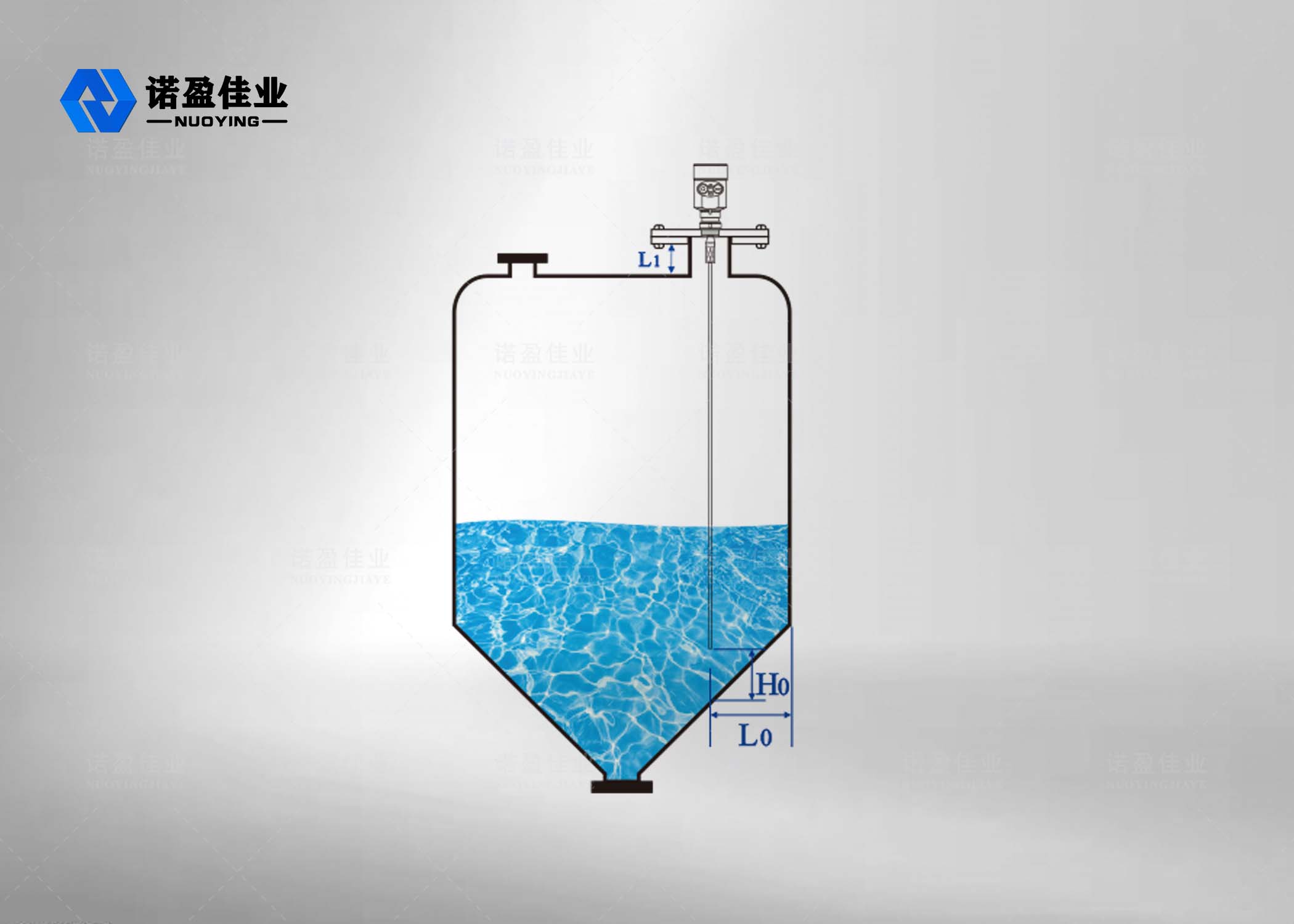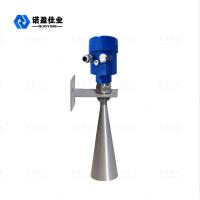NYRD702 PTFE 1.8GHz Guided Wave Radar Level Meter
The guided wave radar level meter is a level meter based on the
principle of time domain reflection (TDR). The electromagnetic
pulse of the radar level gauge propagates along the steel cable or
probe at the speed of light. Part of the pulse of the level meter
is reflected to form an echo and return to the pulse transmitter
along the same path. The distance between the transmitter and the
surface of the measured medium is proportional to the propagation
time of the pulse during that period, and the liquid level height
is calculated.
NYRD702 anticorrosive guided wave radar level meter is more
suitable for the level monitoring of strong corrosive medium, such
as hydrochloric acid solution, nitric acid solution, hydrobromic
acid, dilute sulfuric acid and so on
Radar Level Meter Technical Parameter
| Typical application | Liquids, powders, solid particles, corrosive media |
| Antenna material | PTFE (optional) |
| Measuring range | 6 m |
| Accuracy | ±1mm |
| Power supply | 24 VDC(Two-wire,Four- wire) |
| Medium temperature | -40~+130℃,-40~+250℃ |
| Pressure | e -0.1~4.0MPa |
| Process connection | Thread, Flange (optional) |
| Protection class | IP67 |
| Explosion-proof grade | ExiaⅡCT6(optional) |
| Signal output | 4...20mA/HART/RS485/Modbus... |
※ Note: Products can be customized according to the specific requirements of users!
Radar Level Meter Operating Principle
The high-frequency microwave pulse emitted by the guided wave radar
propagates along the detection component (steel cable or steel
rod), and when it encounters the measured medium, due to the sudden
change of the dielectric constant, it causes reflection, and a part
of the pulse energy is reflected back. The time interval between
the transmitted pulse and the reflected pulse is proportional to
the distance of the measured medium.

◎ Enter
Guided wave radar is a measuring instrument based on the principle
of time travel. The radar wave runs at the speed of light, and the
running time can be converted into a level signal through
electronic components. The probe emits high-frequency pulses and
propagates along the cable or rod probe. When the pulses meet the
surface of the material, they are reflected back and received by
the receiver in the instrument, and the distance signal is
converted into a level signal.
The reflected pulse signal is transmitted to the electronic circuit
part of the instrument along the cable or rod probe, and the
microprocessor processes the signal to identify the echo generated
by the microwave pulse on the surface of the material. The correct
echo signal identification is completed by the pulse software, and
the distance D from the material surface is proportional to the
time travel T of the
pulse:
D=C×T/2,where C is the speed of light
Since the distance E of the empty tank is known, the material level
L is:L=E-D
◎ Export
Set by entering empty tank height E (= zero point), full tank
height F (= full scale) and some application parameters, the
application parameters will automatically adapt the instrument to
the measurement environment, corresponding to 4- 20mA output.
Radar Level Meter Installation requirements
Standard installation method

◎ It is recommended to install at 1/4 or 1/6 of the container
diameter.
Note: The minimum distance from the tank wall is L0≥300mm, H0≥50mm.
◎ Keep away from the inlet and outlet.
◎ Keep clear of obstacles such as limit switches, heating coils,
agitators, etc. Note: The distance between the probe and the
obstacle is ≥200mm.
◎ When the container is a metal can, the radar should not touch the
wall and bottom of the can in the whole range.
◎ If the bottom of the container is tapered, the radar can be
installed in the center of the top of the tank.
◎ The height of the installation short pipe should be L1≤10cm.










